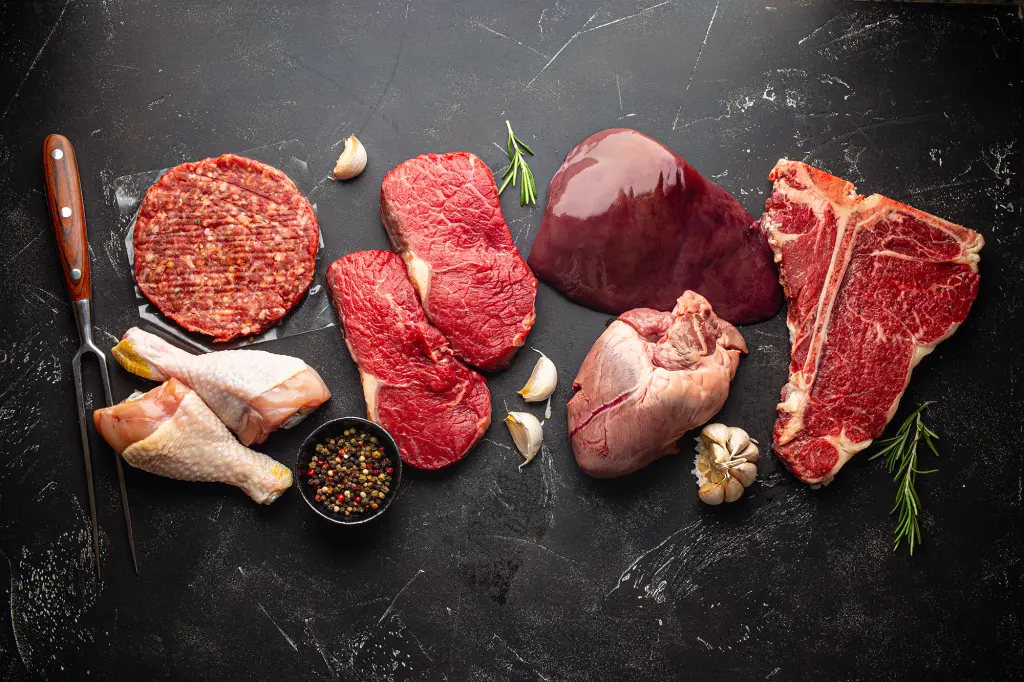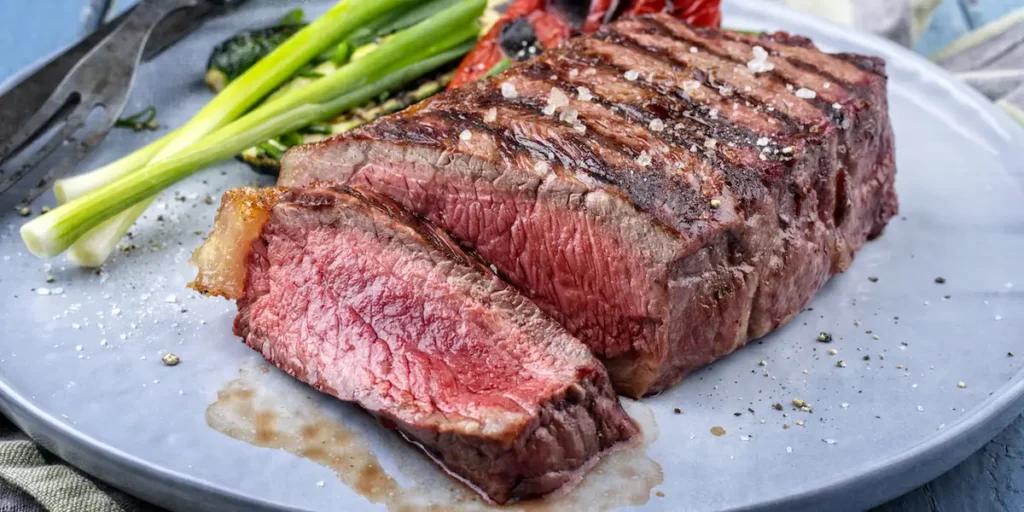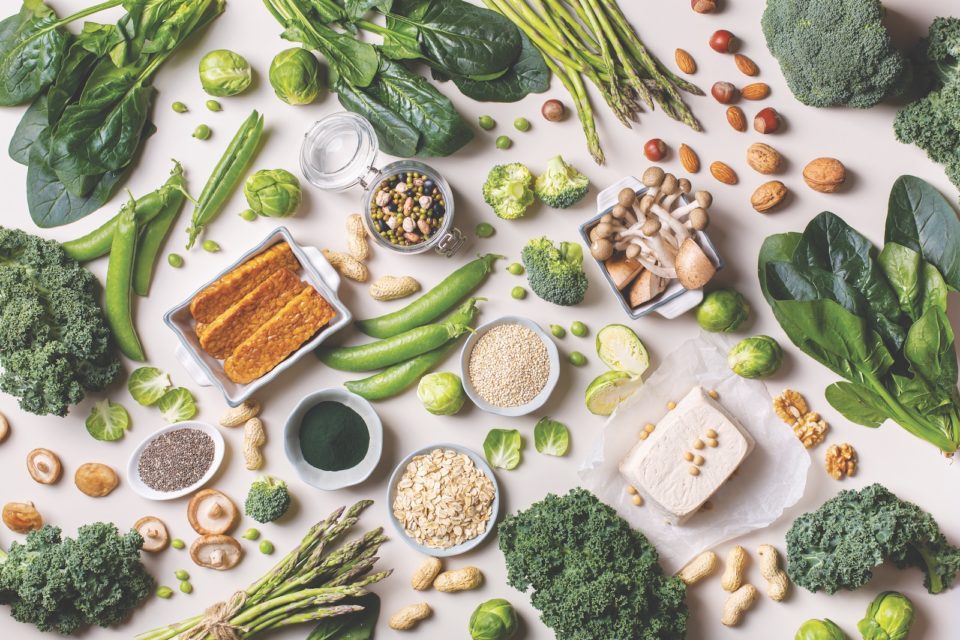Our appetite for meat is costing us dearly. Animal agriculture is among the leading causes of deforestation and other forms of environmental degradation, and meat is responsible for almost 60 percent of the greenhouse gas emissions from all food production. If nothing changes, the food sector will soon account for almost half of the world’s total emissions budget. Assuming we wish to contain global warming to only 1.5°C by 2050—the recommendation of the Intergovernmental Panel on Climate Change—trying to meet this goal without addressing animal agriculture would require other sectors to reduce emissions beyond realistic levels.
Global meat consumption, meanwhile, has dramatically increased over the last few decades and is still on the rise, projected to grow by about 14 percent by the end of this decade. On the other hand, phasing out animal agriculture entirely, over the next 15 years, could stabilize greenhouse gas levels for 30 years and offset 68 percent of carbon emissions, according to a model run by researchers at Stanford and Berkeley. Less drastic and more realistic action would still be beneficial. According to a study by the Potsdam Institute for Climate Impact Research in Germany, just by swapping a fifth of meat for microbial proteins, we could halve deforestation and related carbon emissions by 2050.
Such needs breed opportunities for the many companies willing to try their luck in this space, and one of those is a startup called Air Protein which was founded by scientist turned entrepreneur, Lisa Dyson. She has a Ph.D. in physics from MIT and has worked at Stanford, Berkeley, Princeton, and the Department of Energy’s Berkeley Lab, where she met fellow scientist John Reed. In 2008, the pair founded Kiverdi, a company that now holds dozens of patents on technologies to turn recycled carbon dioxide into alternative fuels.
In 2019 they spun off Air Protein, which is based on the same idea of turning captured carbon into something useful. Their idea draws its inspiration from 1960s NASA studies about the challenges of feeding astronauts during hypothetical journeys to other planets. It turns out, there’s an almost logical solution: “If you’re on a long space journey on a spaceship, asking how do you feed people is about the same question as to how do you recycle carbon,” says Dyson, who made this the subject of a TED talk in 2016.

Recycling carbon
Microbial proteins produced through fermentation are one of three main types of alternative proteins competing in a marketplace recently valued at $4.5 billion. Plant-based products currently dominate the market, and lab-grown animal cells, or cultivated meat, is still largely in the research stage. Although they only hold a modest fraction of that market, microbial proteins have been around for decades: Quorn, made from high-protein biomass obtained by fermenting a fungus called Fusarium, was launched in 1985 and accounts for the vast majority of the microbial protein consumed worldwide, with sales of $156 million in the first half of 2021, of which just $14 million in the United States.
Fermentation itself is historically one of the main ways of preparing and preserving foods, dating back to ancient times, and it leverages the growth of microorganisms—anything from fungi to bacteria—to transform ingredients into such marvels as bread, and yogurt, cheese, chocolate, and alcoholic drinks. In modern food production, it’s also used to make vitamins and enzymes that are then incorporated into a myriad of processed foods.
In the 1960s, NASA wanted to make food by capturing the carbon dioxide breathed out by the astronauts, concentrating it, and then feeding it to microbes in a fermentation vessel. That’s essentially what Air Protein does. “We start with a process that’s like making yogurt,” Dyson explains. “If you look at traditional fermentation today, to feed the system it uses glucose, or sugar, which is made up of carbon, hydrogen, and oxygen. Instead of glucose molecules, we feed our system the individual elements: carbon dioxide, hydrogen, and oxygen. The cultures eat that, and we end up with a high protein ingredient that has all the essential amino acids as well as bioavailable vitamins and minerals.”

Dyson says the product is like high-protein flour. “Once we have that,” she says, “we then apply culinary techniques—think of wheat flour and turning it into pasta—to get texture and structure, essentially what you’re looking for when you bite into a steak or chicken breast. Then we add some spices and flavoring and we end up with Air Meat.”
The process is fast. The cultures double in size every few hours, which puts it ahead of even cultured meat, to say nothing of the years it takes to produce meat by raising animals. “The technology to make a steak, which is a cow, takes two years and for that whole two years you’re using lots of water and lots of lands, either through grazing or to grow soy to feed the cow, which has the greenhouse gas footprint of a car,” Dyson says. “By contrast, our process takes a few days to make a steak, has very low water utilization, is carbon negative, uses zero arable lands, and minimal land overall.”
To be precise, Air Protein says it uses 112,000 times less water and 524,000 times less land per kilogram than traditional meat production, meaning it would take a soy farm the size of Texas to produce the same amount of protein that could be made in an “Air Farm” the size of a single neighborhood in Houston.
Air Protein first made a chicken equivalent in this way in 2019 and has since made scallops. Dyson says they have beef, pork, and more products in the pipeline. That all sounds great, but what do these products actually taste like?
As of yet, there has never been a public tasting and only “a small handful” of unnamed people have tried them. “I’m biased, of course, but other people have said they could feed it to their families and they’d have no idea it’s not real chicken,” Dyson says. “One executive of a large food service chain thinks it’s ready for retail.”

We asked Air Protein to connect us with someone else who has tasted the product for another opinion, but the company declined.
It will take at least a few more years before air meat hits supermarket shelves. The microbes involved in the process are not yet approved for food production, which means anyone sampling the meat now has to sign a liability waiver first. Dyson says Air Protein is currently working with the U.S. Food and Drug Administration to gain a GRAS (Generally Recognized as Safe) approval, and early talks are underway with the European Food Service Agency, although the plan is to launch in the United States first.
Engineering unknowns
If fermentation has been around forever, and the idea of using it to capture carbon dioxide and turn it into protein is at least 60 years old, why hasn’t this been done before? “Because it’s hard,” sums up Dyson, adding that because the process differs from traditional, sugar-based fermentation, existing infrastructure—facilities and bioreactors, or fermentation vessels—aren’t suitable and need to be retrofitted and tweaked: “We had to invent and develop a way to do it, and then make it as commercialize and economically attractive as possible,” she says.
Scaling up production from existing infrastructure is already a huge challenge for the alternative protein industry, but building an entirely new one could be daunting. Liz Specht, a biomolecular engineer and VP of Science and Technology at the Good Food Institute, a nonprofit think tank that advocates for alternative proteins and tracks the industry, says that she believes that Air Protein’s novel process could represent a production bottleneck. “Access to infrastructure will be a challenge because there’s just not a lot of ready-to-go fermentation facilities that aren’t already being used by other industries,” she says. “From an engineering perspective, there are still some unknowns. These microbes are fixing carbon in a way that’s pretty different from how plants do it, and they’re not very well characterized. We don’t have a long track record of industrial-scale cultivation,” she adds. “Almost all of the fermentation done historically has used sugar-based carbon sources, so there’s a lot more working knowledge and experience in that field.”

Fermentation also requires very concentrated carbon dioxide to get growth, so at the moment Air Protein is sourcing it in canisters from third-party producers, who obtain it as a by-product of burning natural gas for ammonia and hydrogen production, or the fermentation processes of beer and whisky. “It’s certainly possible to be sustainable in terms of where that concentrated carbon dioxide comes from,” says Specht, adding that taking it from the air might be more complicated than it sounds. Dyson nevertheless thinks it’s possible by using a process known as direct air capture, which pulls carbon dioxide from the air—although that technology is also still in its infancy.
Even so, that wouldn’t necessarily be a sustainability upgrade, according to Ruben Morawicki, a professor of food sciences at Johnson & Wales University in Rhode Island: “Many industrial processes generate CO2 as a by-product, so if this can be used for further processing, it is a sustainability triumph,” he says. Starting with CO2 captured from the atmosphere, on the other hand, would create an additional sustainability hurdle. “Carbon capture needs energy plus other resources. Therefore, when the environmental impact of carbon capture is added to the Air Protein system, then the global benefit may not be so great.”
Specht sees the lack of land use as a major sustainability advantage for Air Protein: “You’re not having to grow agricultural sugar-based feedstock, and the fact that you’ve got a new class of organisms that wouldn’t be competing to share that feedstock could be really beneficial.” From a scaling perspective, she adds, there is also a reduced contamination risk when working with microbes that don’t grow on sugar feedstocks, where many undesirable bacteria can also grow.
In more general terms, Morawicki thinks Air Protein’s concept is exciting, but not without concerns: “Many attempts have been made to produce something using carbon dioxide as a precursor. The problem with CO2 is that it is the most oxidized form of carbon and therefore inert, and from the energy point of view, it is an uphill battle to convert it into something useful. Nature has its process of doing this. It is called photosynthesis and is very inefficient. Just a fraction of one percent of the incident energy on plants is transformed into sugars. So, if the ‘air protein’ technology is more efficient than photosynthesis, it could be viable,” he says.
Scaling up
Alternative proteins as a whole will need to scale up considerably to achieve change: “Our latest data indicates that alternative proteins currently represent about 1.5 percent of total U.S. meat consumption, and closer to 1 percent globally,” says Specht. “Quite a few analysts are looking at 5 percent to 10 percent by 2030, and then it could scale quicker beyond that.”
But Chris DuBois, senior vice president for Protein Practice at data analytics and market research company IRI, thinks that may be overly optimistic. “I don’t see the basis for it—there would have to be a tremendous amount of change in the industry, in the formulations, in the process, in consumer acceptance to even think about getting to 4 percent,” he says.
Sales of meat substitutes have fallen by 5.8 percent in the past year, according to IRI: “I think what we’re seeing is a plateau. We have just about as many new customers as people who are leaving the category. We’re also seeing people who remain in the category but slow down their purchase levels. It’s not bad, it’s just not growth,” says DuBois.

The stock market value of Los Angeles-based Beyond Meat, the maker of popular plant-based burger patties and other foods, is only a fifth of what it was just a year ago. In late 2021, after a sharp decline in sales, Credit Suisse market analyst Robert Moskow wrote in a research note that “consumer interest in Beyond is simply reaching a peak.” Following disappointing revenue in the first quarter of 2022, Beyond Meat stock traded below the original IPO price of $25 for the first time.
According to DuBois, to accelerate growth the sector needs to create a stronger case for the sustainability of its products, which as of today hasn’t been proven. “The second big thing is to clean up the labels. Beyond Meat has done a nice job, but there’s still a lot of different oils and ingredients that don’t look like food and that’s holding the market back,” he adds. Information opacity on ingredients and manufacturing processes is a key concern for consumers, according to a survey of 1,025 people in the United States run by C.O.nxt and Menu Matters. Almost half of the participants said they want to understand more about how alternative protein foods are created.
Price parity is perhaps the biggest barrier in terms of greater consumer adoption, according to Specht, since plant-based meat is still two to four times the price of conventional meat.
Scaling up is what Dyson is focusing on at the moment. “That’s the main thing we’re doing now,” she says. “Once that’s up and running, we’ll have larger volumes, and in the near future we’ll have consumer events.” Continuing to improve on taste and texture is, of course, one of the main challenges to consumer acceptance, but Dyson believes people will buy into Air Protein’s sustainability story. “We are accelerating the transition to a climate-friendly food system,” she says. “Right now, the food sector contributes more greenhouse gasses to the environment than the entire transportation sector, so the way we’re making food today is not going to sustain us when we hit 10 billion people by 2050.”
Her vision for the future is also down to business: “We are building our own brand and taking our message directly to consumers. We’re trying to create a future where this is just considered meat, where carbon-negative fermentation is the way things are made,” she says.
“You’re eating the outcome of that,” she says, “and it’s delicious, nutritious, and also good for the planet.”











